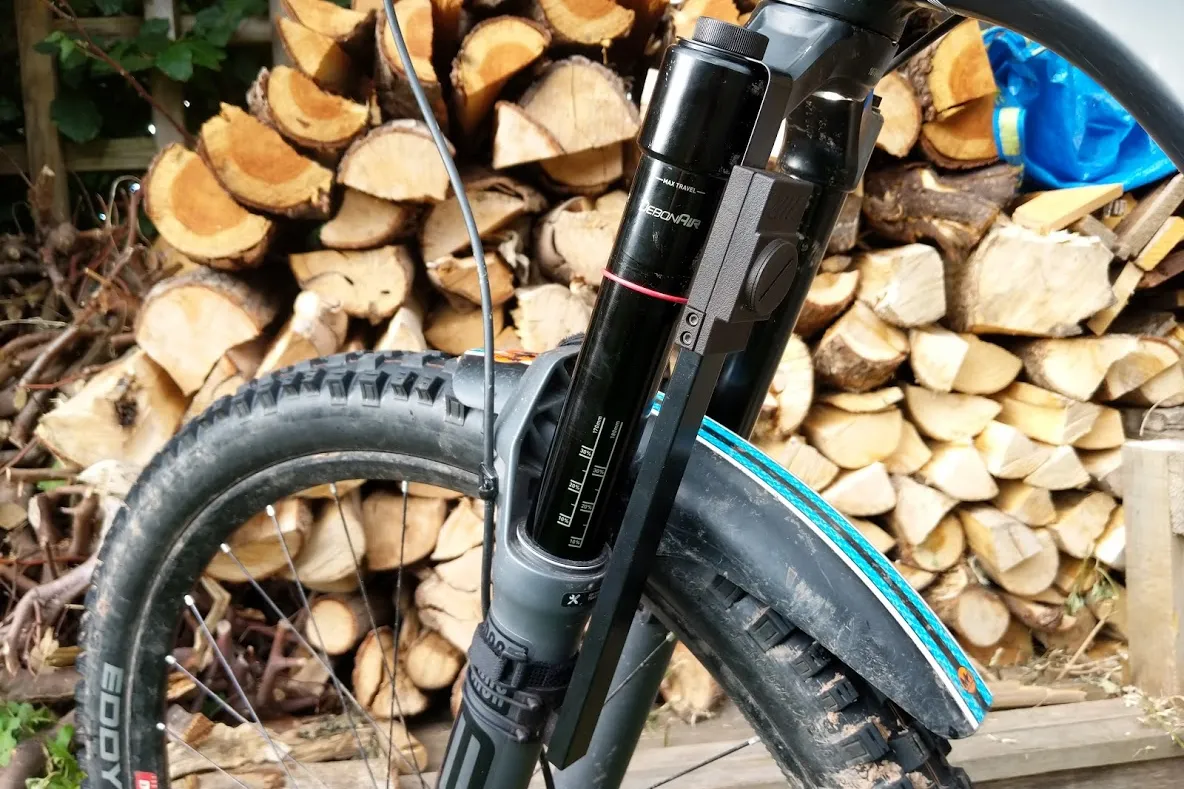It's Friday and that means it's time for another round-up of the best riding kit to arrive with the BikeRadar team.
This week we've been exploring the best tech from the Tour de France, shared our favourite cycling shoes and baselayers, and brought you news of Boardman's latest full-suspension MTR trail bikes.
Yesterday we reviewed the brand-new Vitus Vitesse EVO, a relatively affordable pro-level bike. Meanwhile, I gave my thoughts so far on Privateer's 161 enduro bike, which I've been testing for the past few months.
absoluteBLACK Graphenlube

Competitive road cyclists and pro mountain bike racers are starting to realise that drivetrain efficiency is a relative gold mine of marginal gains.
In the lab, differences between the type of chain lube used (as well as the condition of the chain, the model of drivetrain and the gear combination) can all make a significant difference to the amount of power that transfers from the pedals to the rear wheel, which in turn effects how fast you can go for a given amount of effort.
With that in mind, absoluteBLACK's Graphenlube is the most expensive chain lube we've ever seen. At £114 for a 140ml bottle, it's right up there with the finest single malts in terms of cost per millilitre. You can buy a bottle for just £12, but you only get 14ml! Ouch.
It's a wax emulsion lube that's impregnated with graphene – a much-hyped material comprised of tiny sheets of carbon just one atom thick. Apparently, the graphene (which is very expensive and not the same as the graphite in your HB pencil) helps lubricate the chain more effectively over long periods of riding.
This is claimed to not only save a few watts, and thus provide a marginal performance gain, but also boost the wear-life of the drivetrain, offsetting the cost of the chain lube.
According to a test commissioned by absoluteBlack and conducted at independent test lab Wheel Energy, a chain treated with Graphenlube travelled almost twice as many simulated kilometres, compared to other chain lubes tested, before power losses crept up above 10 watts.

It's worth noting that this test doesn't include every lube on the market, and the other lubes aren't necessarily designed to last for thousands of kilometres on a single application. In the real world, a few 100km before re-lubing is more typical.
In another test conducted by absoluteBlack itself, the Graphenlube was claimed to save 7.3w compared to Muc-Off's Hydrodynamic lube at a 250w output. That's an astonishing 2.9 per cent of the rider's power saved. That's quite an advantage if the test is accurate.
But do these results translate into the real world? We've been trying to figure that out already, but more data is needed, so stay tuned for a review soon.
- £114.99 / €129.95 / $145.95 (140ml bottle)
- FInd out more from absoluteBlack
Motion Instruments data acquisition system
Working out what your suspension is doing isn't easy. Trying to get a fork and shock working together, and at their best, is even harder.
Pro-level downhill riders sometimes use expensive, cumbersome data acquisition kits to help with this. The idea is to record the travel position of the fork and shock hundreds or thousands of times a second while the bike is ridden down a course, then upload the data onto a computer.
In the right hands, data can be used to see how much travel the fork and shock are using, when and how often. Among many other things, this can help flag if the suspension is balanced in terms of travel use, ride height, as well as compression and rebound speeds.
Until now, such suspension telemetry has been beyond the reach of us mere mortals. The hardware required to record the data can be bulky, bespoke and expensive, while the raw data is not easy to make sense of without serious expertise.
However, this nifty little system from Motion Instruments has been developed with pro-level athletes, such as Greg Minnaar, which appears to be more user-friendly than anything we've seen before.
This particular system retails for an almost affordable $1,050, weighs just 242g for the whole kit, doesn't turn your bike into a rat's nest of cables and, most importantly, has an iPhone app to make sense of the data for you (to an extent). The Android version is still in development.

The app isn't designed to give specific setup instructions, but it can tell you such things as how much time your fork and shock spend in each part of their travel and how fast the front and rear axles move on compression and rebound.
This information, which comes in the form of easy to read charts, can be used to work out if the front and rear of the bike are using travel evenly or if one is moving faster or further into its travel than the other.
Histograms help to visualise the amount of time spent in each 10 per cent increment of the travel; toggling between the shock and fork tabs makes it easy to visualise if the fork is spending more time deeper in the travel than the shock, or visa-versa.
This could help to decide if either end of your suspension is too stiff or too soft, too progressive or too linear. Similarly, compression and rebound speeds are tracked for each bump, so if your fork is moving faster than the shock (or visa-versa) it's easy to see this happening on the app, and adjust damping accordingly.
There's a lot more to it than that, and after a couple of days testing I've only scratched the surface of the app's capabilities. I'll have a full review ready once I've puzzled over the charts a whole lot more.
- $1,049.99 (introductory price: $799.99)
- Find out more from Motion Instruments
Squire Inigma lock

Connectivity is the latest trend in all things cycling. Well, now historic lockmaker Squire has jumped squarely into the 21st century with its new Inigma lock.
Instead of using a traditional lock and key mechanism, the Inigma goes about securing your bike via an app on your phone (iOS or Android). A Bluetooth connection enables the Inigma to be opened and it locks automatically when you shut the two halves together.

For those wary of new technology and the potential for hackers to break the code, Squire assures us that, because the system uses 256-bit AES encryption, it’s safe.
According to tech experts, AES would take billions of years to crack using current computing technology. That means no matter how special your bike is, we’re pretty sure the world’s hackers have better things to do.
Being a keyless system the lock can have multiple users, so if your friends or colleagues have the Inigma app you can send an invite giving privileges – perhaps making it ideal for sharing at an office bike park, at home, or if you lend your bike to a trusted friend.
The physical lock has a tough armoured core with a hardened Boron steel shackle that’s encased in an aluminium outer, with a soft-touch polymer bonded to the inner surfaces so it’s kind to your bike. It’s rated to Sold Secure’s highest Gold level.
The Inigma also comes with a battery life of five months based on normal commuting usage, and the app warns you when power levels are low. A full recharge takes two hours.
- £159.99
Tag Metals T1 dropper post

Dropper posts are popping up on ever cheaper bikes, and that's great news for mountain bikers. Aftermarket dropper posts remain a pricey upgrade though, and there aren't many options under £200.
That's particularly true if you want a long-travel dropper (anything with 150mm of drop or more). And, as mountain bikes get longer, they require the rider to stay more central over the bike when riding technical terrain, rather than hanging off the back. This makes longer travel posts even more of a benefit, otherwise the saddle gets in the way when riding centrally over the bike.
Tag Metals is a company trying to break into the mountain bike market from its motocross heritage. Its first dropper post, the T1, is available with 150mm of drop at £160 or 170mm for £180, and in 30.9mm and 31.6mm diameters options.
It's got all the features you'd expect in a modern dropper, including an under-bar remote, a twin-bolt inline head and the ability to set the height anywhere in the travel.
We have the 31.6mm diameter 170mm travel option, which weighs 714g including the full length cables and under-bar remote (or 598g for the post on its own). That makes it lighter than its main rival the Brand-X Ascend II, and it's also lighter than the far pricier 175mm-travel Fox Transfer.
One thing we like about the T1 is that the cable clamps at the lever end rather than at the remote. That means the cable pulls through from the post and is then cut to length and secured with a clamp at the lever, after the post is installed in the frame at the desired height.
This makes installing the post much easier than some, where the cable clamps at the post end so the cable has to be cut precisely to length and secured with a fiddly grub-screw before the post is installed.
The T1 also has a barrel adjuster to fine-tune the cable length after installation – a nice touch.
Our sample post needed inflating from the Schrader valve at the top of the post before it would extend fully, but now operates smoothly with a reassuring "thwunk" as it reaches full extension. We'll let you know how it performs after some extensive bike-based testing.
- £160 (150mm drop), £180 / €206 (170mm drop)


